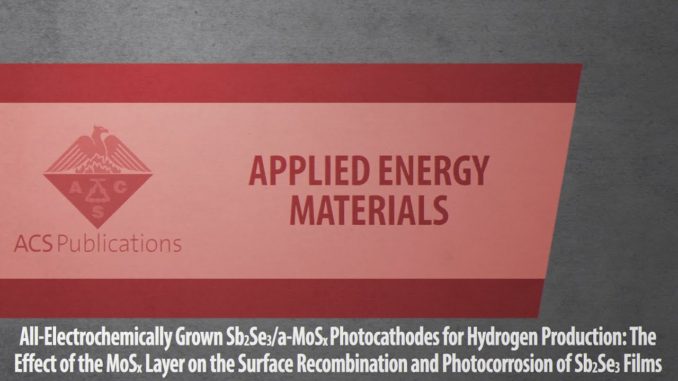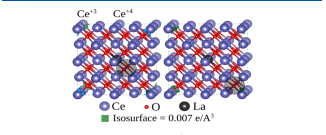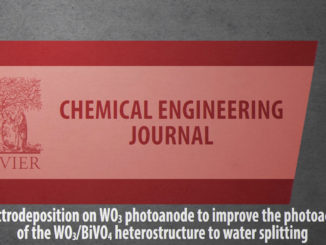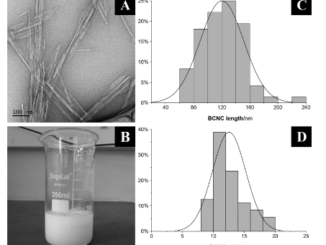
All-Electrochemically Grown Sb2Se3/a-MoSx Photocathodes for Hydrogen Production: The Effect of the MoSx Layer on the Surface Recombination and Photocorrosion of Sb2Se3 Films
Abstract: Sb2Se3 is considered a promising photocathode material for hydrogen production via solar water splitting. Nevertheless, losses caused by photocorrosion and slow charge transfer at the semiconductor/electrolyte interface require the presence of a cocatalyst to improve the kinetic factors. In this work, the activity of all-electrochemically grown Sb2Se3/amorphous-MoSx photocathodes was studied in function of the number of cocatalyst deposition cycles. MoSx, a noble-metal-free electrocatalyst, has shown high activity toward the hydrogen evolution reaction. It promoted an ∼70-time higher improvement in the photocurrent of the Sb2Se3-absorber. An antagonistic effect was observed as the number of cycles increased: thin MoSx layers promoted the maximum enhancement in photocurrent and the decrease in surface recombination, but the photocorrosion inhibition was compromised. In the counterpart, thick MoSx layers allowed the material to be less susceptible to photocorrosion, but the photocurrent was inhibited. Therefore, the relationship between cocatalyst thickness and photocurrent enhancement/inhibition, variation in surface recombination, and photocorrosion stability was evaluated.
Author(s): Costa, MB; Lucas, FWS; Medina, M; Mascaro, LH
ACS Appl. Energy Mater.
Published: September 11, 2020
DOI: https://dx.doi.org/10.1021/acsaem.0c01413




